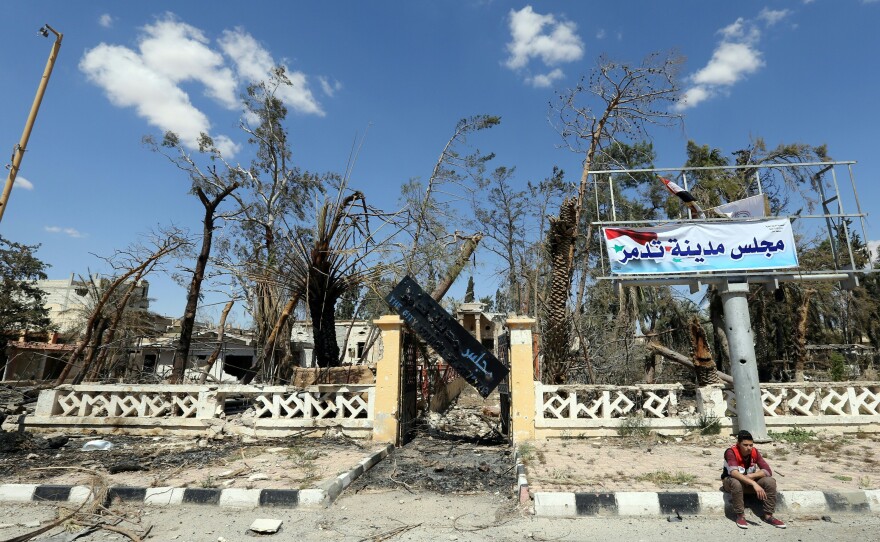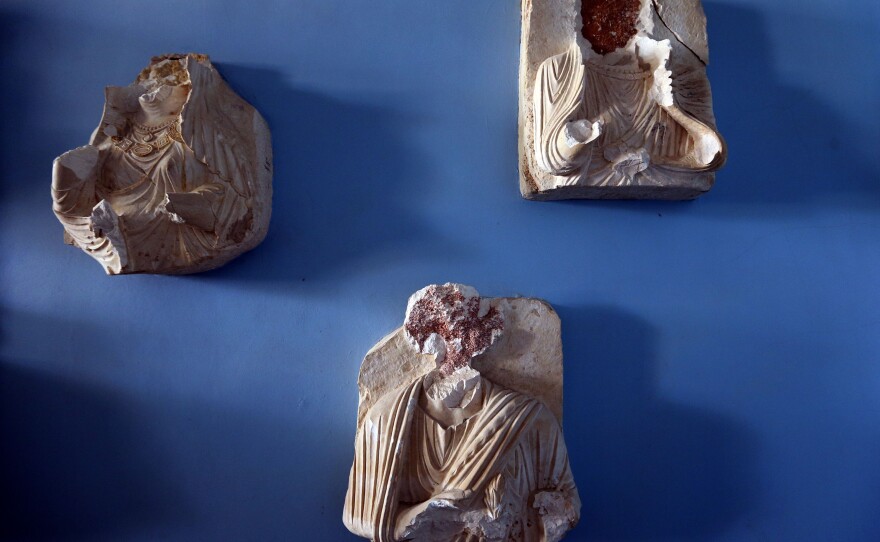A week after Syrian government forces seized the ancient city of Palmyra from the Islamic State, soldiers, engineers and archaeologists are tallying up the damage done to the ancient city.
Visiting the site on Friday, journalists from The Associated Press said the modern town of Palmyra is "completely deserted," and the nearby archaeological site full of treasured monuments reduced to rubble.

The state-run SANA news agency said a mass grave had been found in a Palmyra neighborhood, with the bodies of approximately 40 people, according to multiple media reports.
SANA said the grave contained many women and children, and some of the bodies had been beheaded or showed signs of torture.

On Friday, Syrian troops were working to safely detonate bombs left behind by Islamic State militants. "They booby-trapped everything, trees, doors, animals," a Syrian officer told reporters, according to the AP.

The Islamic State controlled the city for 10 months. As we previously reported, Syrian government soldiers backed by Russian air forces took back the city in an offensive spanning several days.

The city is significant both strategically and symbolically. It's located along a highway that's a key route into the land currently controlled by ISIS. And it's also rich with cultural and historical treasures.
The AP described the state of the UNESCO World Heritage site, once a popular tourist destination, on Friday:
"While some parts of the site, including the Roman-era grand colonnades and amphitheater appeared relatively untouched, the damage was very much visible elsewhere.
"The remarkable Arch of Triumph, built under the Roman emperor Septimius Severus between A.D. 193 and A.D. 211, has been reduced to a pile of stones, blown up by IS extremists who filmed the destruction for the world to see. The monumental arch once sat atop the famed colonnaded streets of the ancient town.
"The Temple of Baalshamin and parts of the Temple of Bel, one of the best-preserved Roman-era sites, are also destroyed.
"Apart from the Roman ruins themselves, heavy damage could be seen on parts of the walls of Palmyra's towering Mamluk-era citadel, built during the Islamic conquest in the 13th century. On top of the scarred citadel, a Syrian flag flies in the wind."

Amr al-Azm, a former Syrian antiquities official and an active member of the Syrian opposition who teaches at Shawnee State University in Ohio, told NPR's Kelly McEvers on Monday that the damage done by ISIS was devastating — but that there was one bright side.
"We [were] also very fearful that as the offensive rolled on into Palmyra, that this was also going to really cause new damage to the archaeological areas as the fighting would rage ... between the ruins. And fortunately for us, this did not happen," al-Azm says.

Now researchers around the world are working on ideas for how to salvage Palmyra's treasures. Roger Michel, of the Institute for Digital Archaeology, is working on creating blueprints to enable the digital reconstruction of some destroyed artifacts. He described the process to Scott Simon on Weekend Edition Saturday.
And in some cases, al-Azm says, the damage wrought by the Islamic State can be addressed through restoration:
"I think, for example, the Arch of the Triumph — when ISIS blew it up, they didn't do a very good job it seemed, fortunately ... There is still a fair amount it still standing, a lot of the stones that were originally part of the arch were on the ground in front of it. And I think it is possible to repair that. ...
"But when you come to the Temple Bel, the situation there is really, really awful. It's going to be almost impossible to repair that. I think maybe at some point they might be able to rebuild it mostly with modern stone and incorporating some of the older stones in it just to give it a sense of the history. But it'll gone. It won't be the same monument."
Copyright 2022 NPR. To see more, visit https://www.npr.org. 9(MDAzMjM2NDYzMDEyMzc1Njk5NjAxNzY3OQ001))











